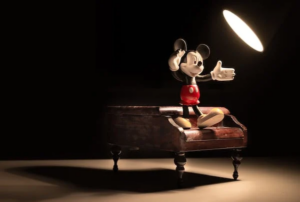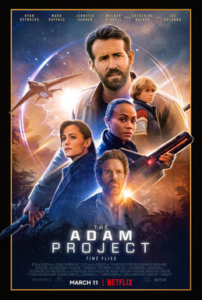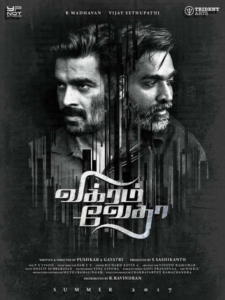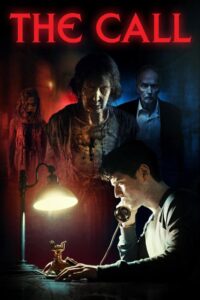The structure of a screenplay is an essential component of creating a compelling story. The structure involves standard formatting requirements as well as different ways to conceptualize and then create your story. Whether you go with a classic structure or you experiment in your work, understanding the basics of screenplay structure will help you create the best possible screenplay for your story.
First Steps in Structuring a Screenplay
You will need to answer a few basic questions and learn some background before you begin.
Do You Want To Adapt a Story or Write an Original?
Though screenwriters always turn a story into a script, they may not write the story itself. You can adapt a story someone else wrote or draw on history or literature. You may also start a script from the beginning based on your own idea.
Decide How You’ll Create the Structure of Your Screenplay
From the classic three-act (setup, conflict, resolution) structure to connected sequences and beyond, there are many ways to structure a screenplay. You’ll need to break down your idea to get started. A script supervisor can also help.
Learn Different Script Styles
Each script must fit its intended medium. For example, film scripts don’t have the same format as TV scripts.
Use Proper Format
You will need to meet formatting requirements while writing your story. Basic requirements include:
- 12 pt. Courier font
- Scene prefaced with heading
- Character’s name introduced in all caps
- Dialogue centered, beginning with character name
Scriptwriting software is available to help make sure your script is in the right format. Useful programs include Celtx and Final Draft.
Determining Story Structure
Story structure involves placing elements of a story into a certain order to create an emotional response. Story structure also explains the organization of your events, characters, and outcomes to create a plot.
Keep some tips in mind:
- Give the audience what they want
- Remember that structure involves content and form
- Pay attention to proper pacing
- Make sure there’s a clear goal for every scene
- Don’t build before planning. An outline is key!
Here are some structures that you should learn about to see which one best fits your story:
1. Three-Act Structure
This classic structure is based on Joseph Campbell’s efforts to unlock the monomyth. The basic structure is:
- Act 1: Setup
- Act II: Confrontation
- Act III: Resolution
Examples of people who have successfully used this structure include Alfred Hitchcock and Steven Spielberg. Learn more about the structure, then learn to break the rules. This structure is often the most accessible design.
To better understand the three-act structure, learn more about the Save the Cat! structure, which breaks the traditional structure into smaller beats. Take a look at “Infinity War” beat by beat to see Thanos’s protagonist character arc.
2. Real-Time Structure
Real-time screenplays show stories in a single stream that’s never interrupted. Examples include:

Scene from “High Noon”
You won’t have any breaks, flashbacks, or jumps in time in these stories.

Scene from “Nick of Time”
3. Multiple Timeline Structure
In this complicated structure, you take linear stories and mix them together. Examples include:

Scene from “The Godfather Part II”

Scene from “The Godfather Part II”
4. Hyperlink Structure
This structure involves multiple times that are linked, affecting each other to create a collective resolution. Examples include:
The structure shows how life is interconnected. All stories must impact the others by the conclusion.
5. Fabula/Syuzhet Structure
“Fabula” refers to the plot in a given story, while “syuzhet” is the organization and narration. You may know more movies that follow this structure than you think.

Scene from “Citizen Kane”
Examples of films that use this structure include:
- “American Beauty“
- “Casino“
- “Citizen Kane“
- “Fight Club“
- “Forrest Gump“
- “Goodfellas“
- “Interview with the Vampire“

Scene from “Forrest Gump”

Scene from “Interview With The Vampire”
6. Reverse Chronological Structure
This structure starts at or close to the end, slicing the story into pieces and then letting scenes tell themselves in order. The film “Memento” offers a prime example of this type of structure, creating tension and uncertainty, answering questions, and bringing up more questions as it moves back in time.

Scene from “Memento”
The beginning of the story becomes the main cause of tension, curiosity, and intrigue.
7. Rashomon Structure
Rashomon structure comes from Akira Kurosawa’s masterpiece of the same name. If you use this structure, you’ll tell the same story from various viewpoints. This structure involves elements of the fabula/syuzhet structure, but it differs by having the same story told many times from different perspectives.
8. Circular Structure
In this type of narrative, a story will end where it starts. This structure also uses some elements from the fabula/syuzhet structure. Time travel films exemplify the circular aspect in a literal way. Examples include:
- “12 Monkeys“
- “Back to the Future“
- “Looper“
- “Primer“
Stories that don’t involve time travel can also employ this structure. Homer’s “Odyssey” offers a great example.
9. Non-Linear Structure
Films using non-linear structure jump around in time, moving forward, backward, and even sideways, to tell one story. These films challenge how we engage with memory. Examples include:
- “Dunkirk“
- “Annie Hall“
- “Pulp Fiction“
- “Reservoir Dogs“
10. Oneiric Structure
Films that use oneiric structure rely on dreamlike visuals. These films explore the structures of memories and dreams as well as human consciousness overall.
Cameron Crowe’s “Vanilla Sky” offers an example of the subtle use of this structure, with lines between the real world and dream world blurring further and further.
11. Alternative Structures
Some additional structures that might work for your story include:
Conceptualizing Key Turning Points
You might also conceptualize your screenplay by considering different stages and turning points. This process can help you outline your story and find the best structure. Here’s an example:
- Stage 1: Setup: You need to draw in your reader (and later, the audience) in the first 10% of your screenplay. In addition to showing the everyday life your protagonist has been living up until this point, this part of the screenplay should make your reader/viewer identify with the hero by revealing the hero as likable, powerful, sympathetic, or threatened.
- First Turning Point: Opportunity: When you are 10% of the way in, you should present your protagonist with an opportunity. The opportunity that arises will create a new and visible desire, starting your character on their journey. The desire isn’t the specific goal defining the story concept, but rather a desire to move into the new situation.
- Stage 2: New Situation: The next 15% of your story will have your hero reacting to the situation that came from the opportunity. Your protagonist will get acclimated, try to figure out what’s going on, or form a plan to accomplish the overall goal. This structure will often follow geography, taking a hero to a new location. Many times, a protagonist will willingly come into this new situation but slowly start to realize that they’re facing greater obstacles than they anticipated.
- Second Turning Point: Change of Plans: This is when something happens to your protagonist to transfer their original desire into a specific goal with a definite endpoint. This scene should define your story concept.
- Stage 3: Progress: At first, the plan your hero makes will seem to work. They can try to achieve their goal for the next 25% of the screenplay. Protagonists can still face conflict during this stage, but they’ll be able to overcome or avoid whatever conflicts they face so far.
- Third Turning Point: Point of No Return: Then comes the midpoint of your screenplay. This is the moment your hero commits fully to their goal. Until this point, the hero could have turned back or given up. At this central turning point, however, the hero takes a much bigger risk.
- Stage 4: Complications and Higher Stakes: In the next 25% of your screenplay, your protagonist will have to face much bigger obstacles in order to achieve their goal, all while knowing that they have more to lose if they don’t succeed. Conflict will keep building. Then, success will seem to be right within reach.
- Fourth Turning Point: Major Setback: Just when success is almost possible, something happens to make it seem to your reader (or your audience) that all is lost. Your hero has only one option left now — they have to push forward for one final chance.
- Stage 5: Final Push: This final push is when the hero has to risk everything to achieve their ultimate goal. Conflict feels overwhelming, and the script moves at an accelerated pace as everything works against the protagonist’s success.
- Fifth Turning Point: Climax: Your last turning point can take place anywhere starting from the 90% mark to the last few minutes of your film, depending on how much time you need to wrap things up afterward. You have to make a few things happen during your screenplay’s climax:
- Your hero faces their biggest obstacle.
- Your hero determines their own fate.
- Outer motivation is resolved one way or another in a conclusive manner.
- Fifth Turning Point: Climax: Your last turning point can take place anywhere starting from the 90% mark to the last few minutes of your film, depending on how much time you need to wrap things up afterward. You have to make a few things happen during your screenplay’s climax:
- Stage 6: Aftermath: Movies don’t end at the exact moment of resolution. Most scripts will reveal a bit about the new life your protagonist gets to lead once they’ve completed their journey, although this stage can be very brief if your want to create an effect like shock for your reader and audience.
Submitting Your Script
Once you’ve perfected your script, you’re ready to submit it. You need to complete a couple of tasks:
- Register your script with the U.S. Copyright Office and The Writer’s Guild of America.
- Put together a cover letter, which should include a logline, a one- or two-sentence story description, a one- to seven-page story synopsis, and your contact information.
It isn’t always easy to get somebody to actually read your script, but you can try certain steps:
- Find an agent.
- Enter contests and competitions for screenwriting.
- Build up a contact network.
10 Examples of Bold Screenplay Structure
Great scripts all have certain elements in common. You’ll always find great dialogue in compelling screenwriting from the protagonist and other characters as well as a coherent theme. The film industry relies heavily on a three-act structure, so bold scripts that break the mold can go a long way. Of course, there are certain screenwriting rules you shouldn’t break. You can play with the screenplay’s structure, though. Here are some great films that do it well.
- “Traffic“
- “Memento“
- “Dunkirk“
Whether you want to write your own screenplays or further your acting or directing skills, understanding how a screenplay is structured will help you produce compelling, engaging work. You can learn more about the structure of a screenplay and how you can improve your skills by applying to the Nashville Film Institute here.

















